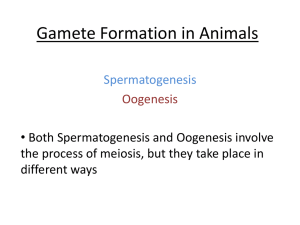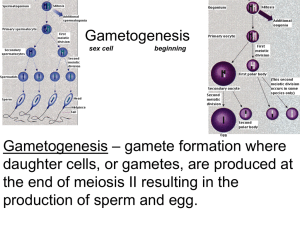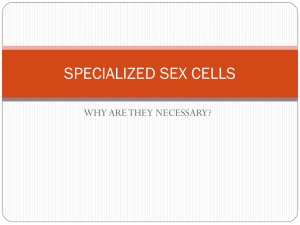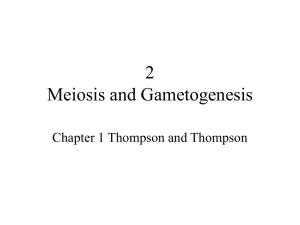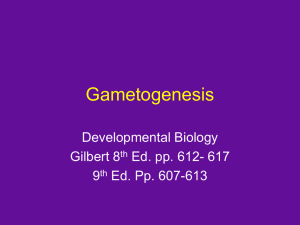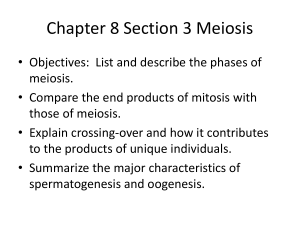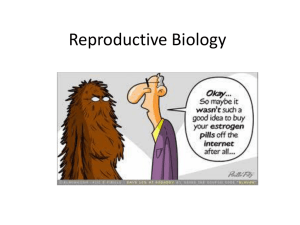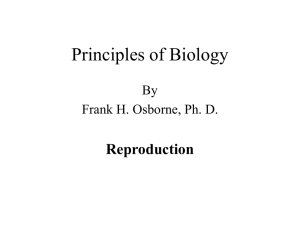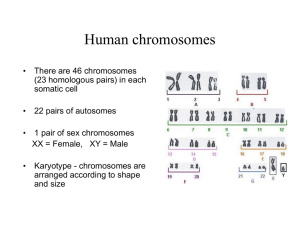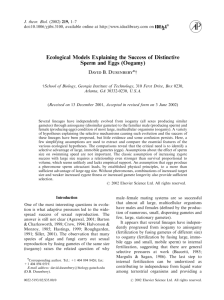Gamete Formation
advertisement
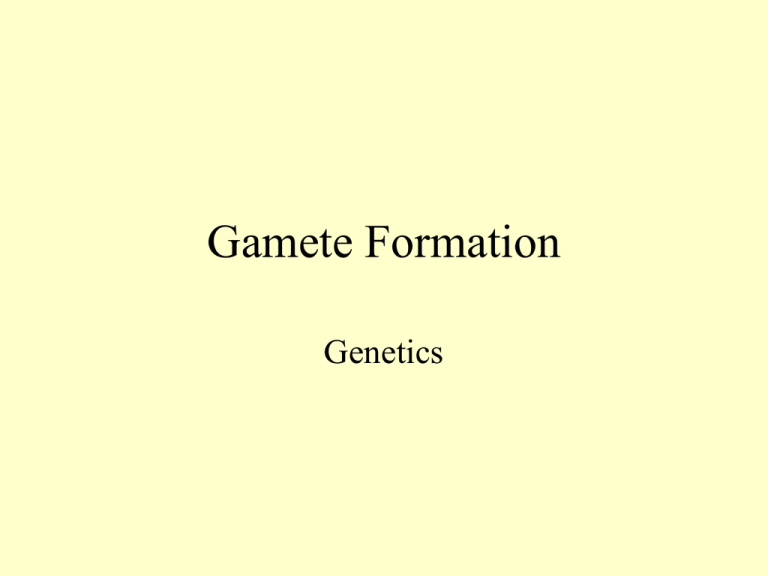
Gamete Formation Genetics Human Gamete Formation • Gametes are the sperm and egg • Both haploid (n), meaning they have only one of each type of chromosome • Produced through a special cell division called meiosis • Somatic cells are diploid (2n) with 46 chromosomes; gametes have 23 Flowering Plant Gamete Production • Ovule: a compartment inside the ovary where female gametes are produced • Anther: where male gametes (pollen grains) are produced • Gametes are always haploid; the zygote is always diploid Gamete Formation Meiosis • Two divisions: goes through prophase, metaphase, anaphase, and telophase twice • In Meiosis I the pairs of chromosomes (and their copies) separate in anaphase • In Meiosis II, the individual chromatids separate Mitosis vs Meiosis Gamete Formation • Spermatogenesis begins with a germ cell called a spermatogonium • Two divisions follow (meiosis I and II) • End result is four haploid sperm Spermatogenesis • Sperm formation passes through these cell stages: • Spermatogonium • Primary spermatocyte • Secondary spermatocyte • Spermatid • Mature sperm Oogenesis • Oogenesis begins with a diploid cell called a oogonium • Two divisions follow (meiosis I and II) • Result is 3 polar bodies and 1 mature ovum (egg) Oogenesis Oogenesis • Ovum formation passes through the following cells stages: • Oogonium • Primary oocyte • Secondary oocyte • Ovum Oogenesis • At birth, a female has all the primary oocytes already formed • Frozen in prophase I • After puberty, meiosis continues with 1 or 2 oocytes each month • Only complete meiosis if fertilized 4 Sperm; 1 Ovum Variety: arrangement and crossing over Fertilization Twinning • Dizygotic: two eggs and two sperm • No more closely related than any siblings • “Fraternal” Twinning • Monozygotic: one egg and sperm • The embryo separates at an early stage and each continues normal development • Genetically identical Twinning • Conjoined twins: a monozygotic pair that does not separate all the way • May or may not share vital organs • Most often, if separated, one lives and the other dies Aging • Genes control cell division and apoptosis, so aging is somewhat genetically regulated • By about age 30, the body begins to decline • Genes control aging both passively (structures break down, cells are not replaced) and actively (causing new activities) Aging • The disease progeria can give clues as to what causes aging • In one type, the gene for helicase is altered. Helicase unzips the DNA for repair and replication. This enzyme is missing in progeria Aging Aging Aging • Environment influences aging as well as genes • America’s oldest person is 113, and is the second oldest person in the world
